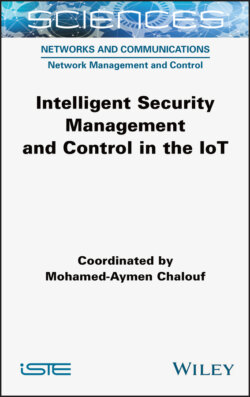Читать книгу Intelligent Security Management and Control in the IoT - Mohamed-Aymen Chalouf - Страница 27
1.4.2.2. Stage 2: classifying channels depending on the energy cost of the transmission models
ОглавлениеOur aim is to minimize energy consumption by choosing the channels that use least energy. To do this, we classify the candidate channels depending on their energy score.
On each Ci channel, it is possible to transmit with the help of m modulations Mm. (MOD)im designates the transmission models possible on each channel Ci, where i represents the channel and m designates the modulation schema and the coding. Because the transmission power of the object has an impact on energy consumption, we suggest evaluating the transmission cost of the transmission models per available channel (MOD)im. This makes it possible to select the channel that most reduces energy consumption and so prolongs the battery life. In fact, the higher the transmission power, the better the signal-to-noise ratio, but a higher transmission power also means greater energy consumption (Krief 2012).
To select the most appropriate channel, the multicriteria decision-making module suggested should (1) calculate the minimum transmission power needed to transmit correctly on a given channel Ci with a modulation Mm, toward the other pair that could be an access point (M-RAN context) or another object (CRN context ), and (2) eliminate the transmission models (MOD)im necessitating a minimal transmission power greater than the device’s maximum transmission power.
To avoid rerunning the calculations at each execution of the selection algorithm, we suggest making calculations upstream and to store them within each object or on a remote device (Fog, Cloud, etc.). In fact, the minimum transmission power for each possible transmission model (channel, modulation) is calculated for different distances and stored on a Fog or Cloud device accessible to the objects.
The energy score is calculated according to the energy cost of a candidate channel and the battery life of the IoT device. For a given modulation and coding schema, the energy cost of a candidate channel is the average energy consumed per bit for the transmission on the channel. The energy cost of data transmission from the application j on this channel i (written Ci,j) is calculated depending on the band frequency, the uplink channel rate and the data flow from application (packet size and packet interarrival time). However, in the context of video streaming, other parameters can be considered to estimate this cost, such as video quality, the number of users and the quality of the channel (Zou et al. 2017).
The energy score SEnergy (i, j) is given by equation [1.6]:
[1.6]
where Ci,j represents the energy cost of transmission of data j from the application along the channel i and EB designates the object’s battery level.
Finally, the selected channels are classed depending on their energy scores. These are calculated according to the energy cost of the transmission models retained (MOD)im and according to the level of the battery of the IoT device.
